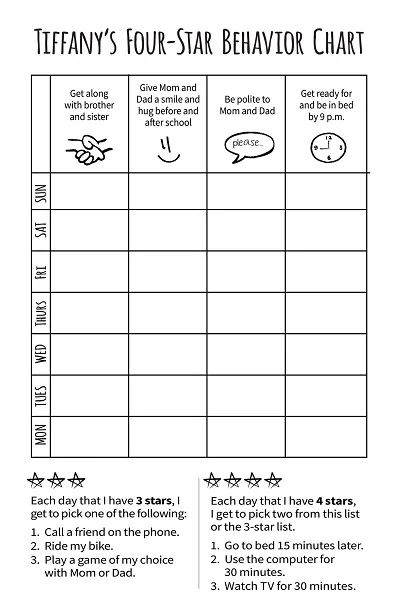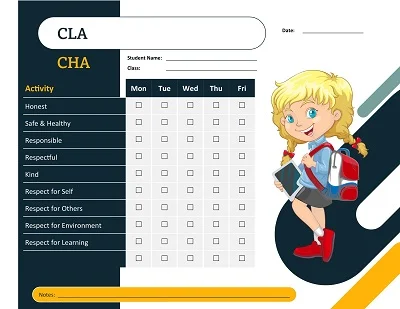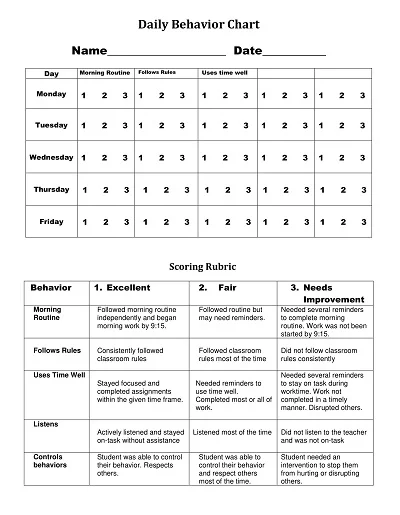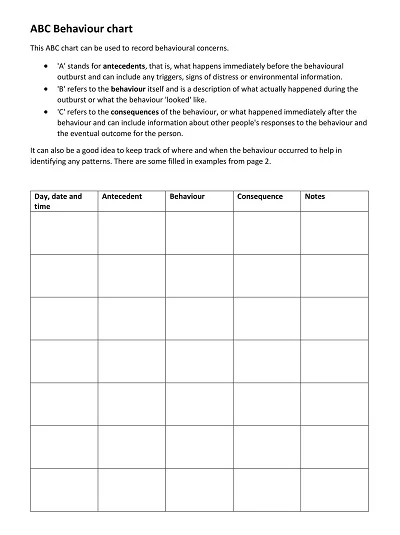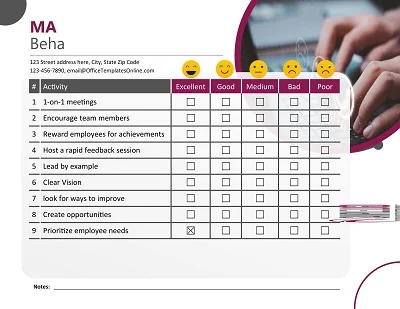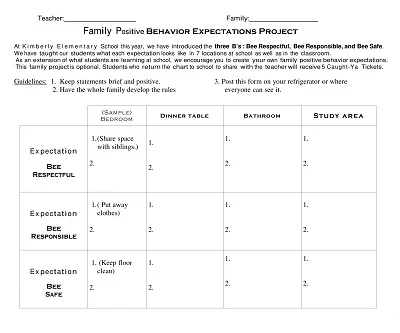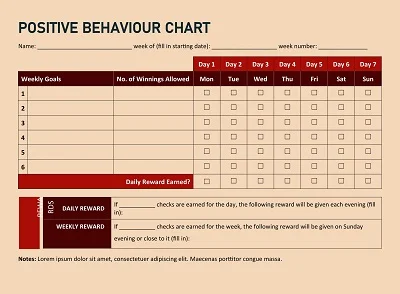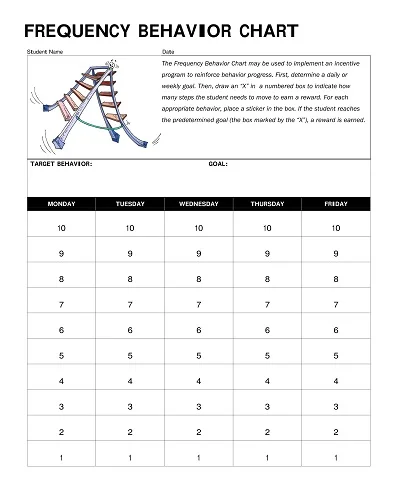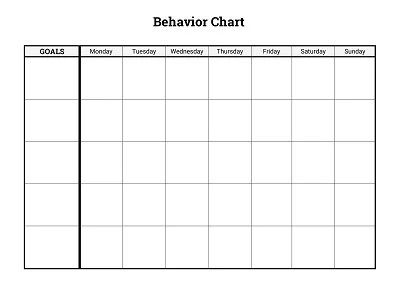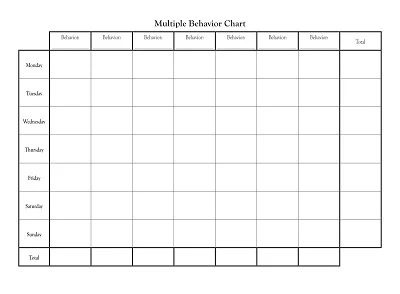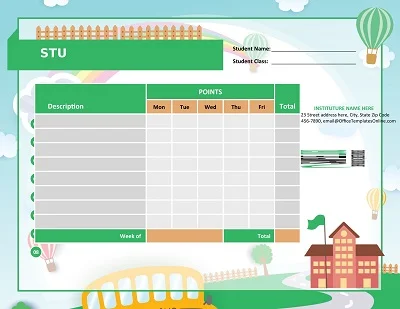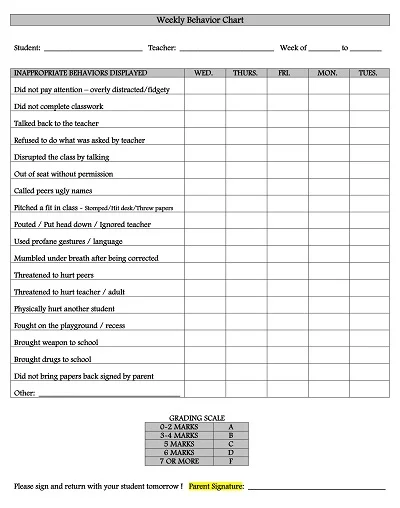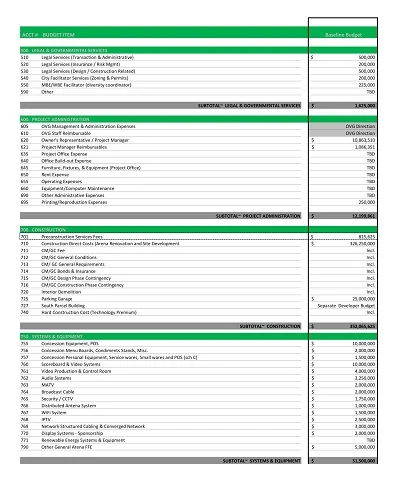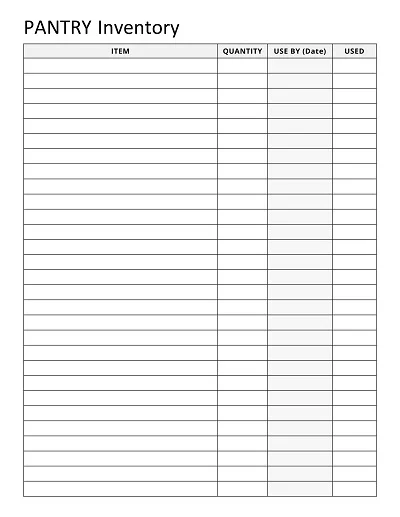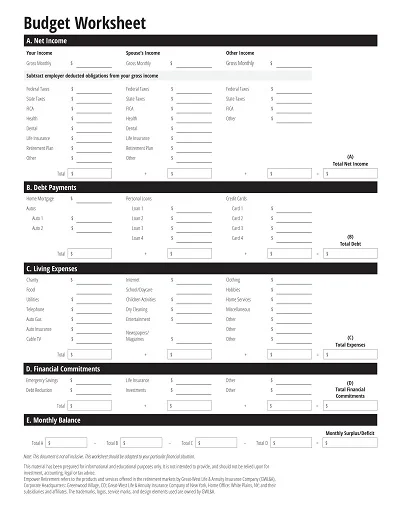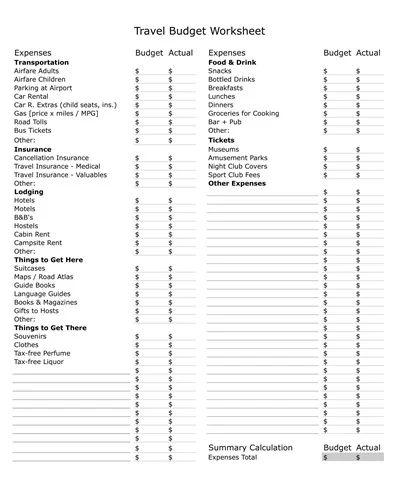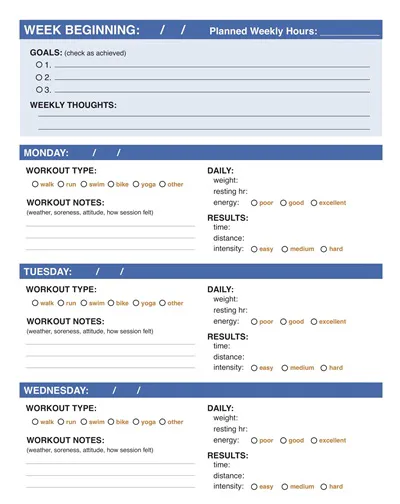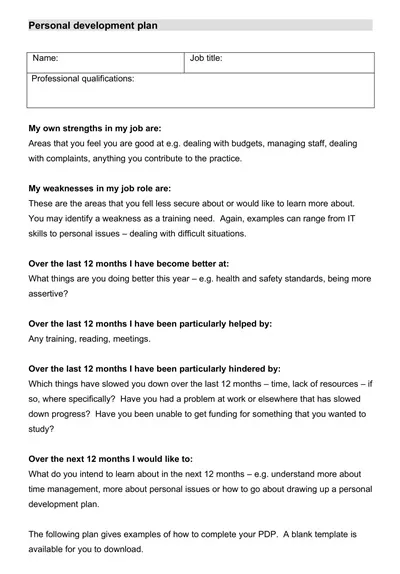Behavior Reward Charts are free printables created mainly by parents and teachers to promote positive behaviour among children. They work based on behavioural modification and use methods such as the ‘star chart,’ which entails rewarding positive behaviours with stars, stickers, or points.
These are saved in a container, and depending on the predetermined quantity, the child is given a big prize after attaining that level. The outlined method also ensures children’s motivation for positive behaviour and their understanding of the importance of striving for specific goals.
Download Free Behavior Reward Chart Printable
Benefits of Behavior Reward Chart
Children behave in specific ways for various reasons, and one of those ways is through behaviour reward charts. By visually mapping out desired behaviours and offering tangible rewards for accomplishing them, these charts provide multiple benefits:
Improved Behavioral Awareness
The students also realize that they are now on the other side of the equation regarding personal behaviour, and the concept of cause and effect emerges more prominently. This awareness is essential in enabling people to be in a favourable position to learn self-regulation factors.
Enhanced Motivation
The realization that one is closer to getting a reward motivates children based on a visual depiction. The hope to gain something specific when a particular set of duties or desirable behaviour is accomplished may be motivating.
Better Communication
Reward charts create opportunities for parents/educators and children to start conversations with each other. They are used to setting expectations and goals and sharing achievements.
Development of Responsibility
This helps children learn to be more responsible for their actions as they work towards achieving the items specified on the chart. In the long run, attaining higher levels of intrinsic motivation instead of extrinsic motivation is possible.
Strengthened Parent-Child Bond
In turn, establishing objectives, achieving them, and sharing the results may contribute to trust and mutual respect in the relationship between parents and children.
Tips for Using a Behavior Reward Chart
Behaviour reward charts can benefit children by helping parents ensure proper behaviour. Nevertheless, certain precautions must be taken when applying them to obtain such outcomes.
Here are some tips on using a behaviour reward chart effectively:
- Set Clear Goals: The addressed behaviour should be defined and pinpointed based on the behaviours or tasks one wishes to promote. Ensure that all goals are possible for the child and appropriate according to the child’s age. Hence, goal clarity assists in directing the child on what is expected of them.
- Be Consistent: Praise must be given special attention, as it establishes the subject’s positive behaviour as the norm. The chart should be used daily, and the behaviour should be rewarded immediately after the event.
- Use Positive Reinforcement. The population focuses on a reward system rather than a punitive mechanism for non-adherence to population norms. Positive reinforcement means that the behaviour will be repeated in the future.
- Involve Your Child: Let your child choose the reward option or get his input on how you want to design the chart. This will increase their interest in those activities or events and their readiness to participate in any given activity or event.
- Keep it Simple: If there are multiple goals to record, do not confuse the chart by listing the rewards. Complex and cluttered charts could make following the chart difficult for the child.
- Be Patient and Encouraging: There is no shortcut to change; anyone who has set out to make a change knows this. Be patient, encourage your child, and make lots of positive comments so that your child works hard.
- Review and Adjust: It is essential to revise this chart occasionally, discuss the achieved or missed goal with your child, and, if necessary, change it or the respective encouragements and penalties. This also makes the system fun for the child and keeps them interested in interacting.
Implementing the Behavior Reward Chart
The exciting part of using the Behavior Reward Chart is that it is a step-by-step procedure aimed at enhancing the appropriate behaviours among children. First, one must distinguish and define the promoted behaviours at the beginning of the intervention. These behaviours should be described in favourable terms like; “can submit homework on time or; does not need to be reminded to help with the house chores, among others.
Some of the measures that may be implemented include the following: Once the above behaviours have been developed, the following process is to create an attractive chart that ought to be placed somewhere easily reachable by the child as well as noticeable. The positive behaviour can be marked using stickers or markers.
First, one should always have clearly defined goals; second, one should always reward the child when he or she finishes with a particular goal. The rewards should be desirable to the child, including additional playtime, a small toy, or a short trip. Periodic assessment and alteration of the chart and behaviours will assist in continuing the child’s focus on the chart and adherence to positive behaviour.
Pros and Cons of Using Behavior Reward Charts
Parents and teachers have widely used behaviour reward charts to promote positive behavioural transformation among children. However, some disadvantages can also be associated with the employment of these charts.
1. Advantages of Behavior Reward Chart
- Promotes Positive Behavior
- Bribes encourage children to embrace the right behaviours defined by society, teachers, or parents.
- It enables the acquisition of new habits to be something one looks forward to rather than a chore.
- Boosts Self-Esteem
- In turn, success and the subsequent rewards can positively influence the child’s self-esteem and self-image.
- It is a way of bringing out the progress’s physical appearance and enhancing a feeling of achievement.
- Improves Focus
- It enables young people to concentrate more on individual objectives; thus, it simplifies instructions given to them.
- It can be designed for specific behaviours that need to be changed or for particular achievements that need to be made.
2. Disadvantages of Using the Behavior Reward Charts
- Dependency on External Rewards
- Externization of justice can lead children to have no interest in what they are doing but rather do it for the sake of being rewarded.
- It may demotivate people to participate in activities unless there is something in them for them.
- Possibility of Negative Competition
- Working in a group may cause rivalry or jealousy among peer groups since everyone is trying to do his or her best.
- The possibility of lowered self-esteem is due to the child losing points as fast as others and being unable to earn them back quickly.
- Oversimplification of Behavior
- It tends to consider non-progressive practices without treating the root causes of certain conduct.
- It may be considered a short-term solution, mainly because it does not groom behaviours in the long run.
How to Create a Behavior Reward Chart
To those wondering, making a behaviour reward chart for children, students, and sometimes even grown-ups can be a good strategy. Here is your guide on how you can design a sound reward system that will encourage employees and clients to act in the desired manner:
1. Identify Desired Behaviors
- Specify Behaviors: This involves ensuring you are specific about the conduct you want to foster. These should be clear, behavioural and quantifiable and can, for instance, be “submitting homework in time” or “doing dishes. ”
- Stay Positive: Less emphasis should be placed on doing what ‘not to’ and more on what should be done. This helps maintain a cheerful environment, which motivates the workforce.
2. Choose a Chart Design
- Select a Format: You can choose between a flat chart download and a physical chart. Big physical charts may be more engaging to kids because they are more fun to touch.
- Design Creatively: The chart should be colourful and attractive, using stickers or topics the targeted individual or group is interested in.
3. Set Up the Reward System
- Short-Term Rewards: Organise yourself to reward your small achievements of the day or the week. These may be stickers, more time to play with a favourite snack or anything the child would want.
- Long-Term Rewards: It is also helpful to have a bigger reward for good behaviours combined for a more extended period, say a week or a month. This could be a favourite place, toy, game, or any other activity the child likes and looks forward to, such as a new toy.
4. Implement the Chart
- Position the Chart: The chart should be installed somewhere easily viewed to ensure people constantly engage with it. Any space where the participants can easily engage with one another, be it a house’s kitchen or a classroom, will do.
- Please review the Chart: It is essential to make it as exciting as possible and talk to the child or learner often about the progress recorded.
5. Regularly Update and Adapt
- Keep it Fresh: Thus, gradually modify the behaviours and reinforcers according to the individual’s progress and evolving preferences.
- Feedback Loop: Ask the child or the student to express his/her opinion on what has proven to be effective or any revision that would interest the child/student regarding the chart.
Designing the behaviour reward chart may give children a feeling of achievement and assist in maintaining proper behaviour.

